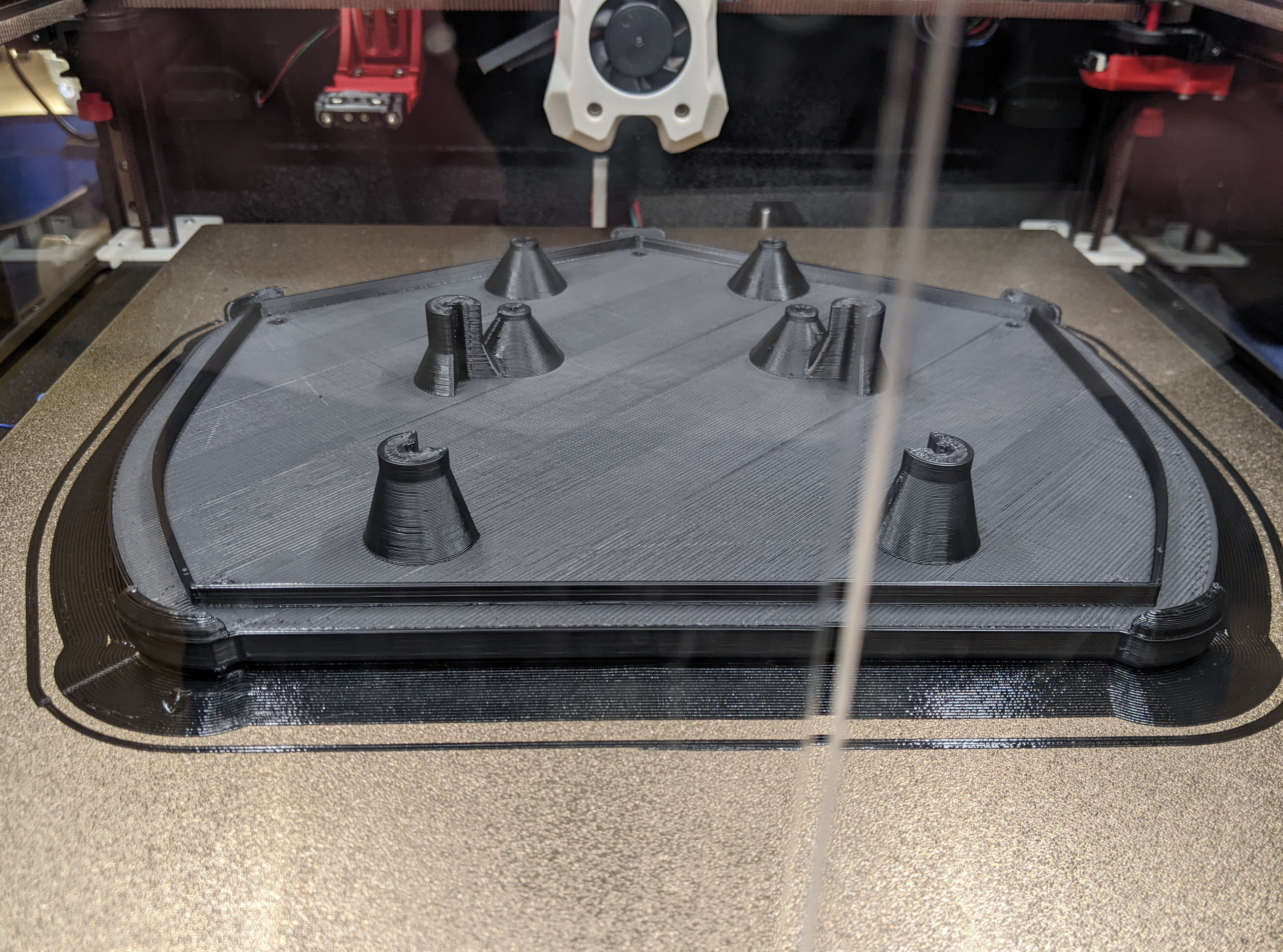This is a follow up from my spaghetti post a few days ago.
Good news: I caught the nozzle catching on the infill during travels. The infill must have been curling up ever so slightly. Turning z-hop on solved this. I also bumped my nozzle to 255 based on a temp tower, but I don’t think my original issue was flow related.
Bad news: this brought me to the failure above - evidently my chamber temps are too low for this size of ASA part and it warped. Maybe the higher nozzle temp contributed. Maybe this size of ASA part is unrealistic despite not having sharp corners. Maybe it’s the fact that it’s continuous from side to side. I am still going to attempt to print a hollow cylinder to go between this piece and another similar piece in ASA, so I guess we’ll find out!
Good news: the part did not let go of the build plate. I’m pretty happy about this. My first layer is not overly squished, I’ve never used any adhesion aids (glue stick, hair spray, ASA slurry, etc), etc. Tuning my print_start sequence is resulting in a very consistent first layer.
Bad news: the build plate came up with the print. Holding the build plate down with binder clips or the like would probably just make something else fail.
Good news: I had enough PETG in stock to use that instead. Zero warpage, so great success. I had to go a bit slower because a flow test showed that I’m limited to around 25 mm^3 for PETG before the extrude motor started misstepping, despite bumping temp to 255 °C. I limited flow to 20 mm^3 to be safe. The print’s a success so meh.



Do you mean you print with a layer of kapton directly on the magnet? I could try that, i do have a roll of kapton tape…
I put the build plate in place as normal, but with a layer of kapton tape applied to it. (My printer won’t work without the steel build plate installed; my Z home sensor is magnetic.) In my case, I have a smooth backed one that doesn’t have the texture on it. You can apply it over the textured side of your build plate, too, but it gives you a resulting bottom surface that’s kind of weird and lumpy.
Kapton tape will work in a pinch, but covering your entire build plate with it is a pain in the ass with all the seams between each strip. I get big sheets of the stuff like these ones, and do it all in one shot. You can pretty easily trim them to fit whatever size your printer’s built plate is.
Remember to readjust your Z offset after you apply the tape because you’ll have to account for its thickness.
Thanks for the reply. I have a z end stop and use z_calibrate to automatically set offset. I may have printed a small part on my my bed magnet once…
My issue was not adhesion with the metal build plate, it was the print warping and taking the build plate with it (look at pic again, the build plate is lifted about 1" on both ends).
I could try taping the build plate down, but that would probably just move the failure point elsewhere…
If you have that much warp you either have a temperature gradient problem, i.e. your enclosure is not enclosed, not retaining heat, or is too cold, or in extreme cases you have a part that’s just not going to work with FDM printing in ABS or ASA (or probably nylon or polycarb either, at that rate). I think you were on the right track with your initial assessment.
Do you have a build chamber heater? My Qidi has one, and I feel like it’s basically cheating. Especially compared to my last printer. It allows me to Just Print with ABS without any of the prior nail-biting or headaches. It feels kind of weird.
The printer is enclosed, but it’s 350mm cubed and the enclosure consists solely of acrylic panels. I have an under bed filter and two additional bed fans. This gets my chamber to 53 °C after an hour of preheating. I am strongly considering swapping to ACM panels and adding a layer of internal radiant insulation. I have the materials, just haven’t spent the time to do it yet.
How hot does your Qidi chamber get?
I imagine there is a ceiling as to how large an ASA part you can print, but I hope this isn’t it.
I think the chamber heater will go as high as 90, although for ABS the slicer warns me not to go higher than 60. It is PID controlled so you can set a specific temperature setpoint. And if my thermal camera is to believed it’s pretty consistent. The good news is also that it can heat the chamber to 55 or 60 in just about ten minutes.